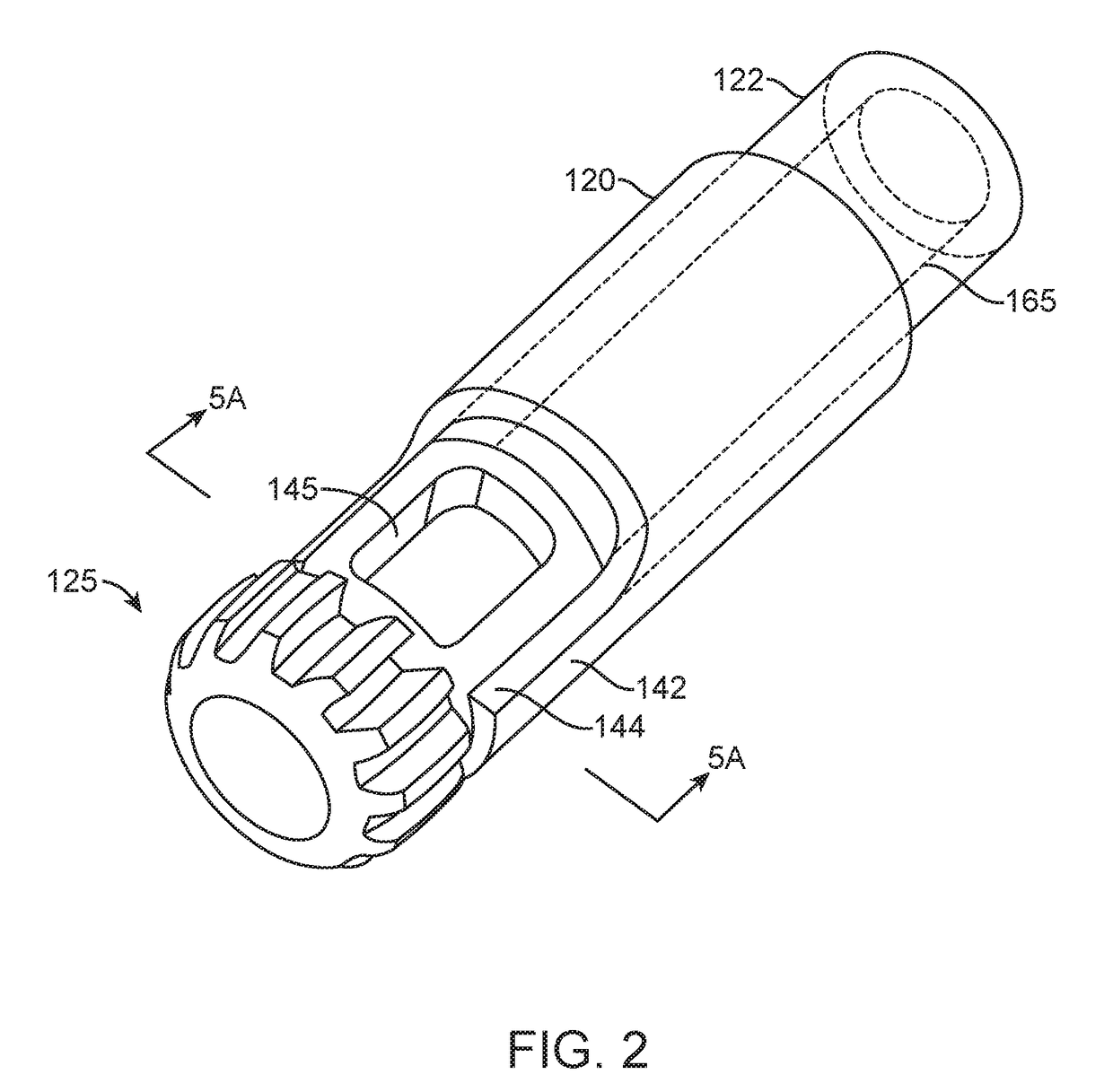Arthroscopic devices and methods
a technology of arthroscopic devices and tissue, applied in the field of arthroscopic tissue cutting and removal devices, can solve the problems of joint failure, wear and tear, and adverse effects on patient health, and achieve the effect of improving the endoscopic viewing of the targeted treatment site, robust and economical connection
- Summary
- Abstract
- Description
- Claims
- Application Information
AI Technical Summary
Benefits of technology
Problems solved by technology
Method used
Image
Examples
Embodiment Construction
[0081]The present invention relates to bone cutting and removal devices and related methods of use. Several variations of the invention will now be described to provide an overall understanding of the principles of the form, function and methods of use of the devices disclosed herein. In general, the present disclosure provides for an arthroscopic cutter or burr assembly for cutting or abrading bone that is disposable and is configured for detachable coupling to a non-disposable handle and motor drive component. This description of the general principles of this invention is not meant to limit the inventive concepts in the appended claims.
[0082]In general, the present invention provides a high-speed rotating ceramic cutter or burr that is configured for use in many arthroscopic surgical applications, including but not limited to treating bone in shoulders, knees, hips, wrists, ankles and the spine. More in particular, the device includes a cutting member that is fabricated entirely ...
PUM
 Login to View More
Login to View More Abstract
Description
Claims
Application Information
 Login to View More
Login to View More - R&D
- Intellectual Property
- Life Sciences
- Materials
- Tech Scout
- Unparalleled Data Quality
- Higher Quality Content
- 60% Fewer Hallucinations
Browse by: Latest US Patents, China's latest patents, Technical Efficacy Thesaurus, Application Domain, Technology Topic, Popular Technical Reports.
© 2025 PatSnap. All rights reserved.Legal|Privacy policy|Modern Slavery Act Transparency Statement|Sitemap|About US| Contact US: help@patsnap.com



